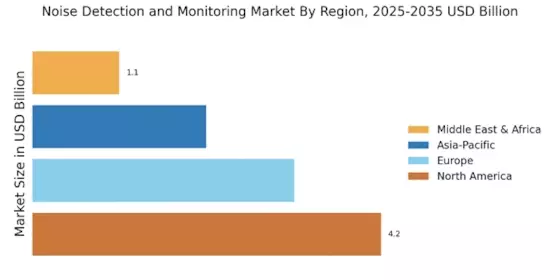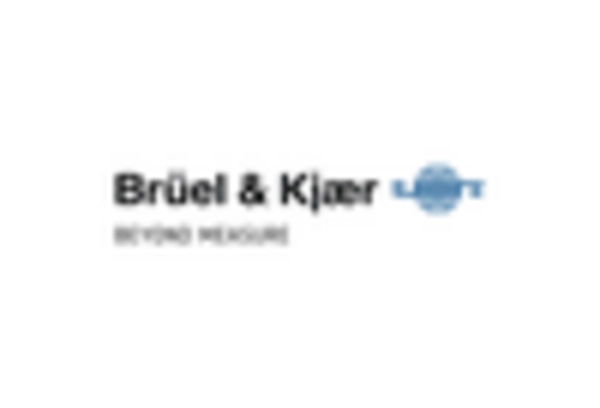Growing Demand for Smart City Initiatives
The growing demand for smart city initiatives is emerging as a pivotal driver for the Noise Detection and Monitoring Market. As cities strive to become more sustainable and efficient, the integration of smart technologies, including noise monitoring systems, is gaining traction. Smart cities utilize data-driven approaches to manage urban challenges, including noise pollution. The implementation of noise detection systems within smart city frameworks allows for real-time monitoring and data collection, enabling city planners to make informed decisions. This trend is likely to accelerate the adoption of noise monitoring technologies, as municipalities seek to enhance urban living conditions. The Noise Detection and Monitoring Market is poised for growth as smart city projects proliferate, creating opportunities for innovative noise management solutions.
Rising Urbanization and Population Density
The increasing trend of urbanization and rising population density in various regions appears to be a primary driver for the Noise Detection and Monitoring Market. As cities expand, the demand for effective noise management solutions intensifies. Urban areas often experience elevated noise levels due to traffic, construction, and other activities. According to recent data, urban populations are projected to reach 68% by 2050, necessitating advanced noise monitoring systems to ensure compliance with noise regulations. This growth in urbanization is likely to propel the adoption of noise detection technologies, as municipalities seek to mitigate noise pollution and enhance the quality of life for residents. Consequently, the Noise Detection and Monitoring Market is expected to witness substantial growth as stakeholders invest in innovative solutions to address these challenges.
Technological Advancements in Noise Monitoring
Technological advancements in noise monitoring systems are significantly influencing the Noise Detection and Monitoring Market. Innovations such as IoT-enabled devices, real-time data analytics, and machine learning algorithms are enhancing the accuracy and efficiency of noise detection. These technologies allow for continuous monitoring and immediate response to noise disturbances, which is crucial for urban planners and environmental agencies. The market for smart noise monitoring solutions is projected to grow at a compound annual growth rate of 10% over the next five years. This growth is driven by the increasing need for precise noise data to inform policy decisions and urban planning. As technology continues to evolve, the Noise Detection and Monitoring Market is likely to expand, offering more sophisticated tools for managing noise pollution.
Regulatory Frameworks and Compliance Requirements
The establishment of stringent regulatory frameworks and compliance requirements regarding noise pollution is a crucial driver for the Noise Detection and Monitoring Market. Governments and regulatory bodies are increasingly enacting laws to limit noise emissions from various sources, including transportation, construction, and industrial activities. These regulations necessitate the implementation of effective noise monitoring systems to ensure compliance. For instance, many regions have set specific noise level thresholds that must not be exceeded, leading to a surge in demand for noise detection technologies. The Noise Detection and Monitoring Market is expected to grow as organizations invest in solutions that facilitate adherence to these regulations, thereby avoiding potential fines and enhancing their corporate responsibility.
Increased Awareness of Health Impacts of Noise Pollution
There is a growing awareness of the health impacts associated with noise pollution, which serves as a significant driver for the Noise Detection and Monitoring Market. Research indicates that prolonged exposure to high noise levels can lead to various health issues, including stress, sleep disturbances, and cardiovascular diseases. As public health organizations and governments recognize these risks, there is a heightened focus on implementing noise monitoring systems to protect community health. This awareness is prompting investments in noise detection technologies, as stakeholders aim to create healthier living environments. The Noise Detection and Monitoring Market is likely to benefit from this trend, as more entities prioritize noise management as a critical component of public health initiatives.


















Leave a Comment